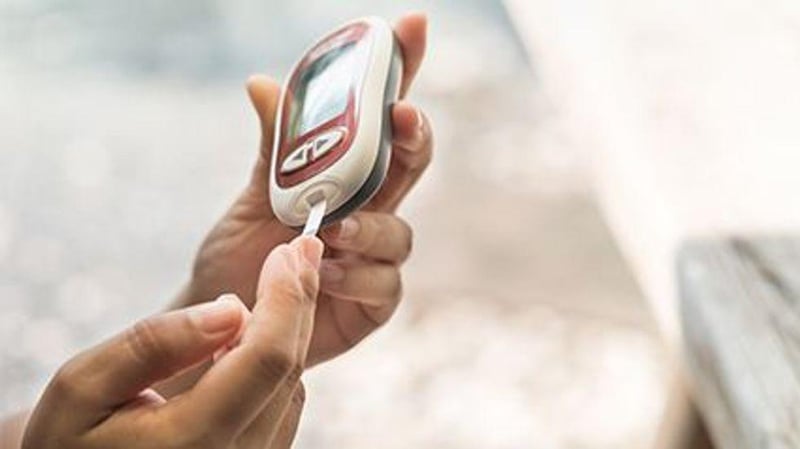Get Healthy!

- Alan Mozes
- Posted September 28, 2023
Over a Third of Adults With Type 1 Diabetes Weren't Diagnosed Until After 30
Type 1 diabetes has long been viewed as a childhood disease, but a new study suggests it might be time to revise that thinking.
Investigators concluded that nearly 4 in 10 Americans with type 1 diabetes aren't diagnosed with the blood sugar condition until they're at least 30.
"Our research adds to a growing body of studies showing that adult-onset type 1 diabetes may be as common as childhood-onset type 1 diabetes,"said study author Michael Fang, an assistant professor in the Department of Epidemiology at the Johns Hopkins Bloomberg School of Public Health in Baltimore.
"Nonetheless,"added Fang, "I think this finding may come as a surprise to many clinicians and people in the general population."
The U.S. Centers for Disease Control and Prevention explains that only about 5% to 10% of all diabetes patients have type 1 diabetes, which is believed to be a result of the body essentially attacking itself, due to an immune system running amok.
That distinguishes it from the much more common type 2 version of diabetes, which is more often attributed to lifestyle factors. Such factors include being overweight or obese, which can trigger insulin resistance, ultimately leading to dangerously high blood sugar levels.
Identifying clear risk factors for type 1 is tricky, the CDC cautions, though having a family history of the disease is a big warning sign.
Until recently, the consensus has been that while type 1 diabetes can develop at any age it typically strikes children, teens and young adults.
However, that presumption may be incorrect, with the study team pointing to recent research that suggests that more than half of all type 1 diabetes cases (about 62%) develop after the age of 20.
To gain more insight into how old type 1 diabetes patients actually are when diagnosed, investigators examined data concerning nearly 950 adults (18 and up). All had previously been confirmed as having the disease.
Patient information had been gathered by the U.S. National Health Interview Survey every year between 2016 and 2022, with the exception of 2018.
The pool was almost equally divided between men and women, with an average age of 49 at enrollment. About three-quarters were white.
The overall median age at diagnosis was pegged as 24, meaning that half of the patients were diagnosed at a younger age, while the other half was diagnosed when older.
Men were more likely to be diagnosed later in life than women, at 27. Among women, the median age was 22.
Racial and ethnic minorities also tended to get diagnosed significantly later in life, the team found, with a median diagnostic age ranging from 26 to 30. That compared with 21 among white patients.
Fifty-seven percent of patients did not find out that they had type 1 diabetes until they were 20 or older, while 37% of the patients didn't find out until they were 30 or older. Another 22% were not diagnosed until they were at least 40.
What does this all mean?
"While it is commonly believed that type 1 diabetes develops in childhood, our findings suggest it is not that simple,"said Fang. "Type 1 diabetes can develop at all ages."
Still, the CDC notes that type 1 diabetes symptoms are often initially mild, and they may go unnoticed for months or even years. On top of that, routine screening is not currently recommended.
So, might it be the case that some patients develop the disease while young, yet go undiagnosed well into adulthood?
Not according to Fang, who views the findings as more of an indication of "the heterogeneity of the disease,"rather than a sign that type 1 diabetes patients are falling through the cracks.
The bottom line, he said, is that "sometimes it develops in childhood. But often it develops in later ages."
The findings were published Sept. 26 in the Annals of Internal Medicine.
Dr. Caroline Sloan is an assistant professor of medicine and population health sciences at the Duke-Margolis Center for Health Policy at Duke University in Durham, N.C.
Sloan, who was not part of the study team, said the findings underscore "our continued tendency as clinicians to associate type 1 diabetes with childhood and to assume that when a person develops diabetes as an adult, it's unlikely to be type 1 diabetes, even in the face of strong evidence that a large proportion of patients with type 1 diabetes develop the disease in adulthood."
That's a big problem, she suggested, because "if a patient's diabetes type is misdiagnosed [as type 2 diabetes] it could change a lot about how they're treated, what doctors they see and their ability to control their blood sugars adequately."
Sloan's advice: When adults go in for diabetes screening, it's important to deploy testing "that can help figure out the type of diabetes a person has."
More information
There's more on type 1 diabetes at the U.S. Centers for Disease Control and Prevention.
SOURCES: Michael Fang, PhD, MHS, assistant professor, department of epidemiology, Johns Hopkins Bloomberg School of Public Health, Baltimore; Caroline Sloan, MD, general internist and assistant professor, medicine and population health sciences, Duke-Margolis Center for Health Policy, Duke University, Durham, N.C.; Annals of Internal Medicine, Sept. 26, 2023

